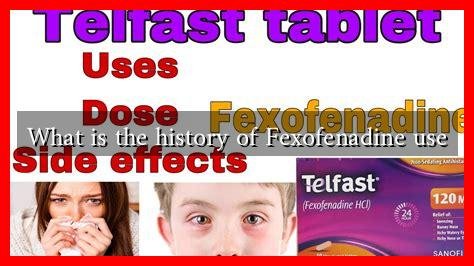-
Table of Contents
The History of Fexofenadine Use
Fexofenadine, a widely used antihistamine, has become a staple in the treatment of allergic conditions since its introduction. Understanding its history provides insight into its development, efficacy, and the role it plays in modern medicine. This article explores the journey of fexofenadine from its inception to its current status as a leading allergy medication.
Origins of Fexofenadine
Fexofenadine is a second-generation antihistamine that was developed in the late 1980s. It is a metabolite of terfenadine, which was one of the first non-sedating antihistamines introduced in the market. Terfenadine was effective in treating allergies but was withdrawn from the market due to safety concerns, particularly its association with cardiac arrhythmias when taken in high doses or in conjunction with certain medications.
Recognizing the need for a safer alternative, researchers focused on fexofenadine, which was found to have a better safety profile. In 1996, fexofenadine was approved by the U.S. Food and Drug Administration (FDA) for the treatment of seasonal allergic rhinitis and chronic idiopathic urticaria (hives).
Mechanism of Action
Fexofenadine works by selectively blocking peripheral H1 receptors, which are responsible for the symptoms of allergic reactions. Unlike first-generation antihistamines, fexofenadine does not readily cross the blood-brain barrier, which minimizes sedation and other central nervous system effects. This makes it a preferred choice for individuals who need to maintain alertness while managing allergy symptoms.
Clinical Use and Efficacy
Fexofenadine is primarily used to alleviate symptoms associated with allergic rhinitis and chronic urticaria. Its efficacy has been demonstrated in numerous clinical trials, which have shown that it significantly reduces symptoms such as:
- Runny or itchy nose
- Sneezing
- Itchy or watery eyes
- Hives and itching
In a study published in the Journal of Allergy and Clinical Immunology, fexofenadine was shown to provide relief from allergy symptoms for up to 24 hours, allowing for once-daily dosing. This convenience has contributed to its popularity among patients and healthcare providers alike.
Market Presence and Popularity
Since its approval, fexofenadine has gained significant market presence. It is available under various brand names, including Allegra, and is offered in multiple formulations, such as tablets, orally disintegrating tablets, and liquid forms. The drug’s popularity can be attributed to several factors:
- Non-sedating properties, making it suitable for daytime use
- Long-lasting effects, allowing for once-daily dosing
- Minimal drug interactions compared to first-generation antihistamines
According to a report by Grand View Research, the global antihistamine market was valued at approximately $8.5 billion in 2020, with fexofenadine being one of the leading products in this category.
Case Studies and Real-World Applications
Numerous case studies highlight the effectiveness of fexofenadine in real-world settings. For instance, a study involving patients with allergic rhinitis showed that those treated with fexofenadine experienced a significant reduction in symptoms compared to those receiving a placebo. Additionally, patients reported improved quality of life and fewer disruptions to daily activities.
Another case study focused on patients with chronic urticaria, where fexofenadine was found to be effective in reducing the severity and frequency of hives, leading to improved patient satisfaction and adherence to treatment.
Conclusion
The history of fexofenadine is a testament to the evolution of allergy treatment. From its origins as a metabolite of terfenadine to its current status as a leading antihistamine, fexofenadine has proven to be a safe and effective option for managing allergic conditions. Its non-sedating properties, long-lasting effects, and minimal drug interactions make it a preferred choice for both patients and healthcare providers.
As the understanding of allergies and their treatment continues to evolve, fexofenadine remains a vital part of the therapeutic landscape, providing relief to millions of individuals worldwide. For more information on fexofenadine and its uses, you can visit the [FDA website](https://www.fda.gov) or consult with a healthcare professional.

